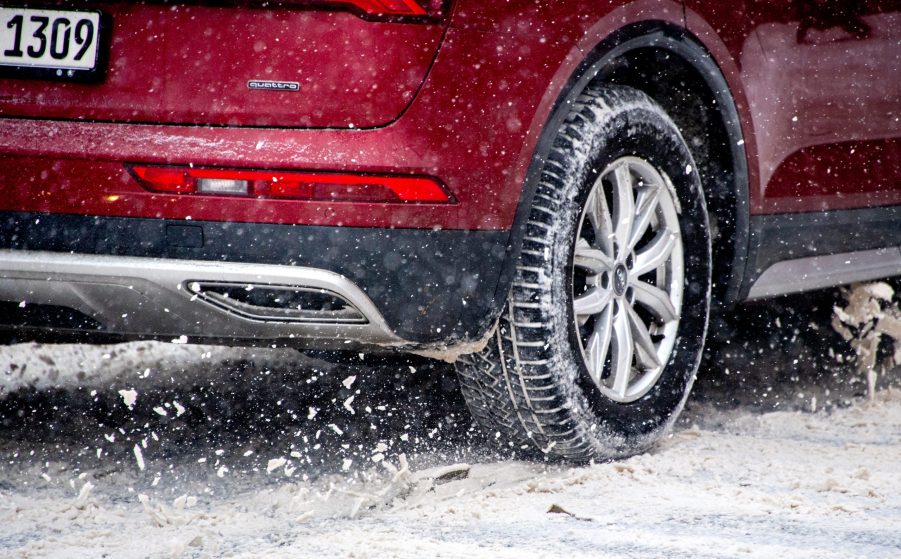
You Put Your Winter Tires On Too Early–Are They Still Safe in Snow?
In this article:
Winter tires are an important part of safely driving in snow and ice. Many drivers want to get ahead of potential weather troubles and get those winter tires on early. But you can put your snow tires on too early. It is likely not a problem unless you’ve exceeded the mileage or driven on a particularly hot day. But, here’s how to tell if your winter tires will be safe in the snow.
Check the tread blocks for smaller grooves

Winter tires are unique in that they create as many edges as possible. These edges help bite into snow and ice to give you added traction on slippery surfaces. This is the biggest factor in determining whether or not your winter tires will still be safe in the snow.
The chunky tread blocks will have smaller grooves cut into them for added flex and grabbing capability. If your tread blocks still have these little cuts, you’re good to go. But if those blocks appear solid, they don’t have the same grip they used to, and it’s probably time for a new set.
You notice excessive and uneven wear
Most snow tires are designed to provide as much contact patch as possible to the road surface. But if your alignment is out of spec and you’ve driven too many miles on them, it can create an uneven surface. This means less grip in one part of the tire when compared to another. This is, in many cases, worse than simply driving on worn tires.
The uneven tread can make handling unpredictable and cause a sudden loss of control. Low, predictable grip is safer than a tire with an ever-changing grip level. If you notice uneven wear on your winter tires, it’s time for a new set even if they’re just a few months old.
Replace those winter tires if chunks of rubber are missing

This one is a bit obvious, but it’s important you know why your winter tires are suddenly missing chunks of rubber. Because these tires are best for high grip in cold conditions, hot asphalt is incredibly detrimental to their long-term condition.
Ultra-hot pavement can cause the softer rubber of snow tires to delaminate due to overheating. If you install them in August or September, those last few 80+ degree days of early autumn are terrible for your snow tires. And if you put on a lot of hard, hot miles, you can literally tear your winter tires apart.
Check your winter tires to ensure safe snow driving
It’s easy to want to put your snow tires on as early as possible to stay ahead of an early snowstorm. But if you’ve had your winter tires on for a while already, make sure to check them for wear and damage to ensure you can drive safely when the snow flies!




